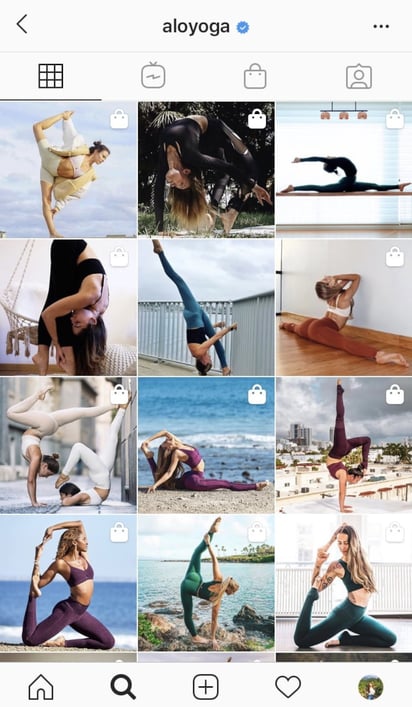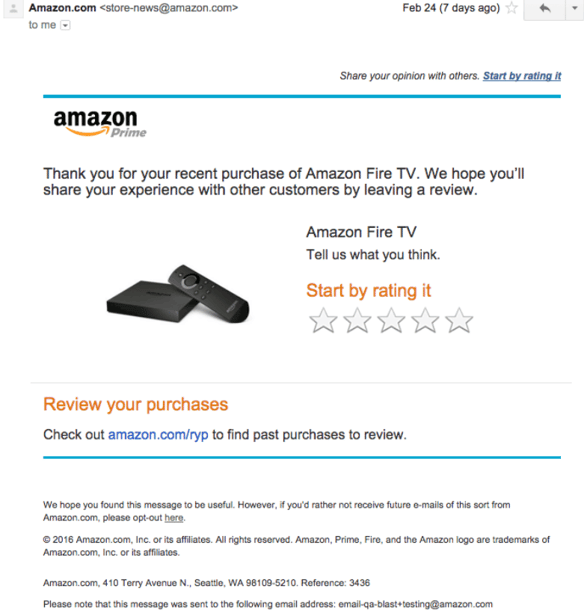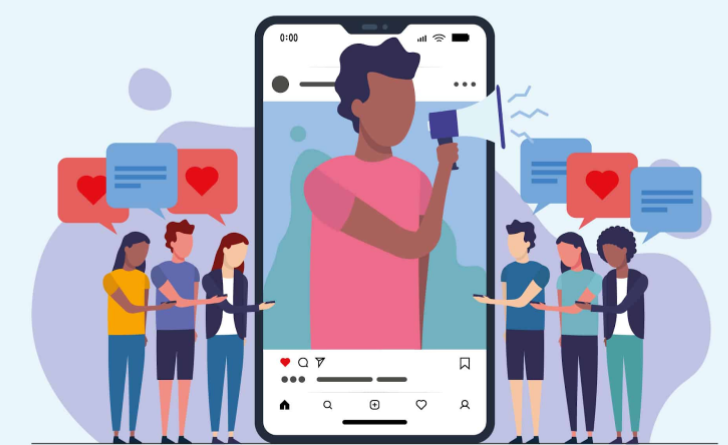User Generated Content For Ecommerce: Everything You Need To Know
Everyone is attached to a screen nowadays, and although health care professionals are not particularly happy about it, the eCommerce industry should be thrilled! More screen time gives people more time to engage with your business. But more importantly, the more they indulge in social media channels, the more they are inclined to post about their experiences.
Resulting in your eCommerce business getting free advertising! Utilizing user-generated content for eCommerce is guaranteed to help your sales growth and enhance your brand image.
In order for your business to reach its full potential, it's essential your marketing team take advantage of every piece of user-generated content out there. In this article, we will go over all the important information you need to start monetizing user-generated content!
Table of Contents
- What is user-generated content
- Why is User Generated Content Important?
- UGC Vs. Influencer Marketing
- How can you monetize user-generated content?
- How to get user-generated content?
- Incorporating UGC In Different Platforms (with examples)
- Integrating user-generated content in campaigns
What is User Generated Content?

User-generated content (UGC) is anything a consumer creates and posts on a content sharing or social media platform, including photos, videos, reviews, ratings, gifs, and audio. That seems simple enough, so why is it that important? There are numerous reasons why user-generated content positively affects your company, but before we go into details about those reasons, this question can easily be answered by three words: word of mouth.
Customers will always believe other customers more than companies. Because, to be honest, no matter how transparent your company is, everyone tends to be a bit biased when it comes to selling their own product. Which is not really a bad thing but with the word of mouth and other customers' opinions, people know they get the absolute truth. In fact, 93% of marketers believe that consumers trust user-generated content above content created by companies.
Why is User Generated Content Important for eCommerce?
Now, getting back to the long list of reasons why you should use UGC in your marketing plan. User-generated content starting from a simple 24-hour Instagram story all the way up to one-page reviews can help you tremendously increase your sales. Thanks to UGC for helping your ecommerce business in:
- Increasing brand awareness
- Decreasing the number of returned purchases because customers will know what exactly to expect from your products.
- Reducing costs, as it’s a cheap method that requires little to no money, therefore the ROI tends to be very high (in case of organic UGC not influencers’ marketing campaigns).
- Building a loyal customer base because sharing user-generated content on your own website or accounts makes consumers feel heard and seen. Accordingly, you can easily develop relationships with your consumers.
- Driving purchase decisions, many people tend to check reviews before they make a purchase, so if you are already highlighting the reviews and testimonials, you can get a much higher conversion rate.
- Learning what your customers actually want to see in your products. By that, you're helping your R&D and product development teams gather data with minimal effort and give you better results.
- Nudging customers in the right direction, as 79% of consumers say that UGC affects their purchasing decisions.
- Increasing session duration, in fact, studies show that 90% of website visitors spend more time on websites that have UGC.
- Becoming more popular on social media, especially since posts with user-generated content on social media platforms have 28% higher engagement rate.
Gaining customers’ trust, particularly because 92% of consumers reported that they tend to hesitate when they are purchasing an item without reviews or ratings.
UGC Vs. Influencer Marketing
A lot of markets confuse user-generated content with influencer marketing. Although influencers can be a part of your UGC efforts, the two are not quite the same. The key difference is that, unlike user-generated content, you have to pay influencers to post for you. In addition to that, consumers find user-generated content more trustworthy than influencers’ content because, at the end of the day, everyone knows that influencer marketing is purely promotional content.
However, that doesn’t mean you shouldn’t include influencer marketing in your plans. By choosing the right influencers, you can gain the audience's trust. The right influencer has to be a relative one to your business, and preferably it could be a local one with an average of 100,000 followers. As micro-influencers are trusted more than influencers with millions of followers, your ROI will be higher.
How Can You Use User Generated Content for your business?

After learning the importance of user-generated content, are you ready to use it? If you are among the smart marketers that want to leverage the power of UGC to their advantage, let’s take a closer look at what can be done on your part.
There are multiple ways you can utilize user-generated content to gain customer loyalty and drive sales. For instance, you should:
- Share social media posts on your own accounts.
- Comment on every piece of content you get tagged in, so your consumers feel heard.
- Take screenshots of website reviews and share them on your social media accounts.
- Dedicate a whole page on your website to different types of UGC, so consumers can easily find them.
- Incorporate UGC in your newsletters and promotional emails
While all that sounds great, now you should learn how to increase user-generated content for your eCommerce brand so you can truly benefit from it!
How to Get User-Generated Content?
Although user-generated content has to come organically from your consumers, there are limited things you can do to increase it. To increase user-generated content, you have to incentives consumers by:
- Creating competitions and contests that motivate customers to share their experiences with you. For example, you can offer a small prize for the most liked photo you get tagged in.
- Create specific hashtags with fun or compelling factors that push your customers to engage.
- Gamify the process by putting a list of little tasks your users should do to get a reward e.g. if they post a picture of a product of yours and tag 3 of their friends in the comments; they get a 5% discount on their next purchase.
- Add a share button on the checkout page or in the confirmation email, so consumers can share with their friends and followers what they ordered.
All of this and more can be done across different channels, including your website and social media accounts. To put that into perspective, let’s take a look at some real life examples of businesses repurposing user-generated content on their own platforms.
Read more about 9 eCommerce User-Generated Content Campaigns To Inspire You.
Incorporating UGC In Different Platforms (with examples)
As previously mentioned, user-generated content comes in many different forms; accordingly it can be placed and utilized on many platforms. For instance, the most prominent placement of testimonials is at the end of the front page of a company’s website. But there are many others, so let’s take a deep dive into how to make the most of UGC!
On Instagram, you can simply repost any photo you get tagged in or share it in a story. You can also add screenshots of customer’s ratings and reviews in your highlights so that anyone can find them easily later on. Some brands have most of their Instagram feed filled with UGC. For example, the lifestyle brand, Alo Yoga, uses artistic photos taken by their consumers to promote their clothes.

- Youtube
Youtube might be a bit tricky, but you can show some screenshots at the end of your videos or create a video combining UGC videos. A great example of using Youtube to showcase UGC is GoPro. The company posts many videos shot by regular consumers, and these videos gained a lot of popularity among videographers that GoPro now holds awards shows to choose which user-generated content will be featured on their youtube channel.
Twitter might be the simplest yet one of the most effective places you can utilize UGC in. On Twitter, you simply reply and retweet! You can also go the extra mile and add some incentives to gain UGC on Twitter because let’s face it, most people go on Twitter to complain. That’s what the online florist, Teleflora, did. By offering only a $50 prize, the company managed to increase engagement and gather tons of user-generated content.

- Ecommerce Store (Website)
Last but definitely not least, you have to add UGC to your eCommerce store (company’s website). Testimonials and ratings showcased on your home page will help reflect the quality of your products. You can also add a comments and reviews section on each product page to increase your conversion rates.
Take the e-commerce giant, Amazon, as an example, the company always encourages its customers to leave a review in the confirmation email. Amazon also took it a step further and made ratings one of the filters on its platform, making UGC and customers’ opinions a vital part of the purchase process.

Integrating User Generated Content in Campaigns
Randomly posting UGC on different platforms is one thing, but did you know that it can be placed in campaigns serving any purpose or life cycle? If someone is in the awareness stage, it’s good for them to learn what others think of your products. On the same note, if a customer is on the verge of a decision, a positive testimonial can give them the push they need to make a purchase. Therefore, it’s not only smart, but it is essential to integrate user-generated content in your campaigns across different channels.
That might be too many steps for you, but after collecting the right pieces of UGC you want to use in your campaign, you could use marketing automation tools like ConvertedIn to auto-segment your customers and send out the right messages at the right time!
Final Notes
In the end, it’s worth mentioning that you should integrate user-generated content and take advantage of this great free marketing tool. But don’t forget to ask permission before reposting, give credit to content owners, and constantly thank your dedicated customers for their efforts.
Also, remember to request a demo now so we can help your eCommerce business take advantage of any user-generated content that comes your way and create the best campaigns!
 By
By
